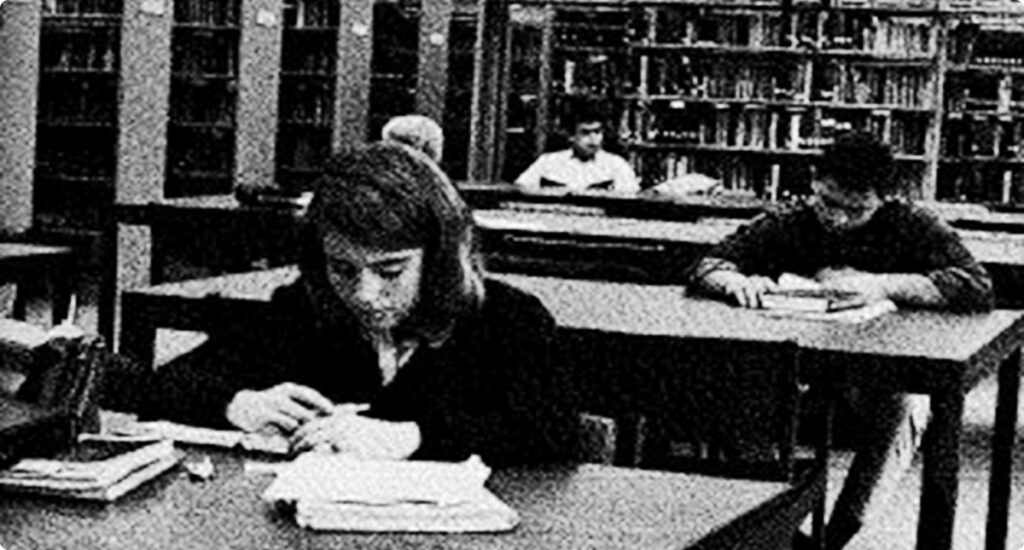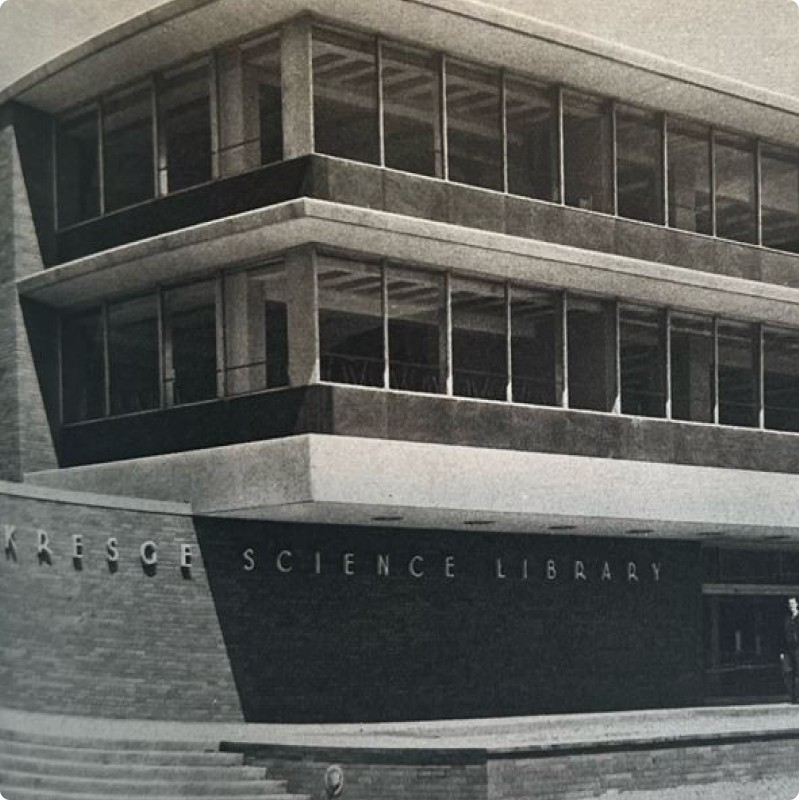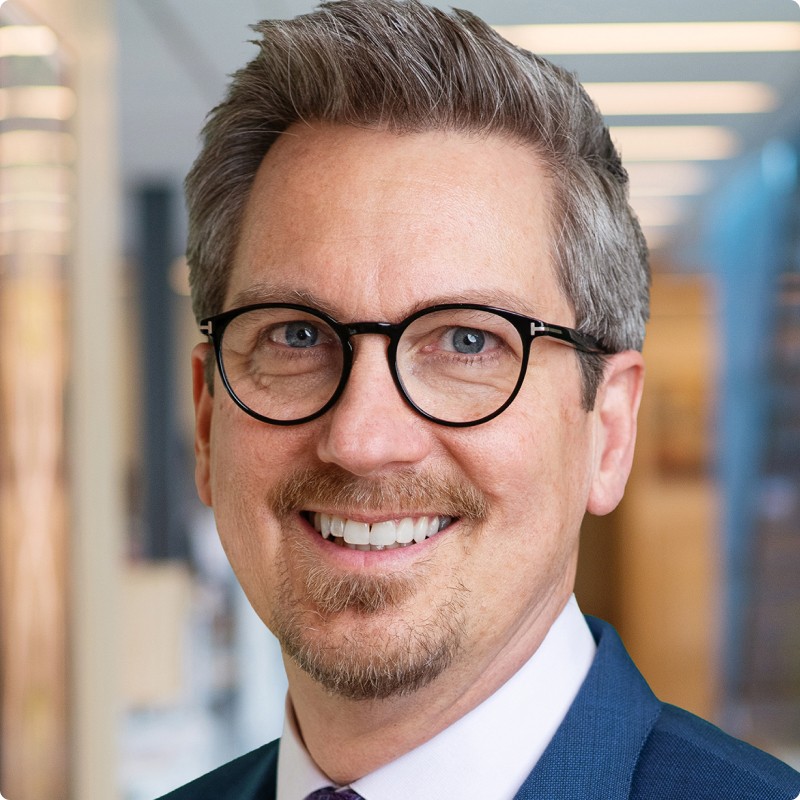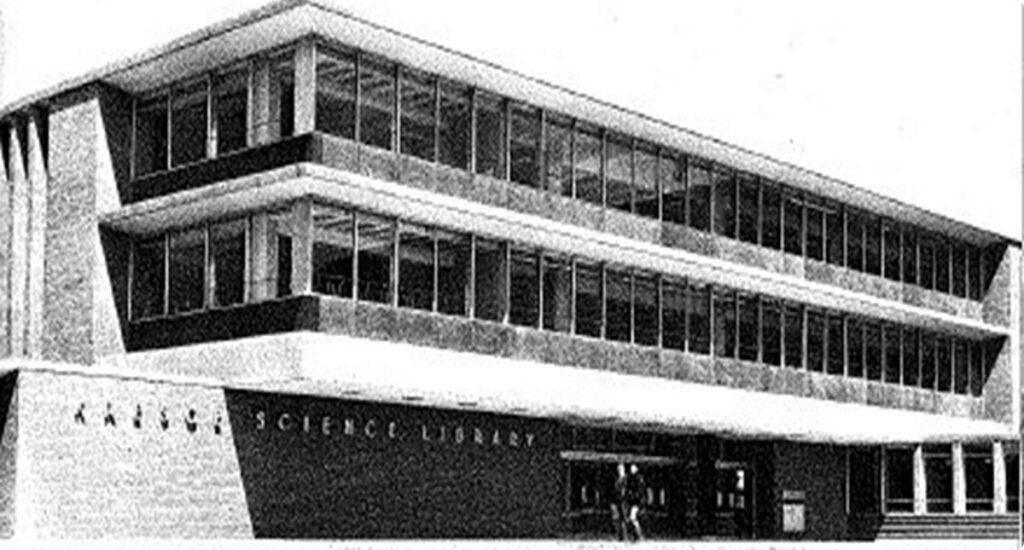Kresge has supported higher education since its founding in 1924.
How far back can you trace work related to this program?
For most of our history, Kresge concentrated our grants on nonprofit organizations completing capital facilities. In the 1960s, Kresge earmarked more than 50% of grants to university and college facilities, including libraries and classrooms. Kresge formally ended its higher education facilities grantmaking and switched to postsecondary access and success in 2010.


What is an example of an early investment in this space?
A few early investments in the higher education space were grants to Wayne State University in Detroit. Kresge awarded a grant for the completion of the WSU Science Library in 1938 and the establishment of the Hooker Scientific Library in 1944. These were both intended to bolster the availability of academic resources at the college. Grants totaled $1.3 million to Wayne State for these projects.


Why has this area been historically important to Kresge?
“College attainment is one of the surest ways for people to enter the middle class,” says Bill Moses, managing director, Education Program. “That is even more true today than it was in 1924.” Kresge’s earliest higher education grants supported colleges important to our founder. As Kresge shifted its overall focus to opportunity for low-income people in cities, the Education Program shifted its focus as well, to postsecondary access and success.
“Since 2010, the team has directed funding to underrepresented students, students of color and first-generation college students, and the institutions that serve them, especially community colleges, minority-serving institutions and public institutions.
“Most students from low-income families go to college in or near their hometowns. Often, local K-12 systems, community colleges, four-year universities, businesses, nonprofits and local governments fail to coordinate or align their programs, credits or activities, leaving students to navigate complex environments alone. By encouraging community-based solutions through an Urban Higher Education Ecosystem, we believe we can have a positive impact on college attainment.”

How do the current strategies reflect or build on our historical investments in this area?
The Kresge Foundation seeks to contribute to healthy, thriving cities, with an emphasis on reducing disparities facing low-income people, advancing their pathways of opportunity, and promoting cultural vibrancy, systems of mutual support, and environmental resilience. The Education Program supports that mission by promoting the ability of low-income, disadvantaged, or marginalized people to enter, and succeed in, post-secondary education.
“Historically, during Kresge’s capital challenge grantmaking era, we supported HBCUs to build facilities,” Moses said. “We also funded a special initiative to strengthen HBCU fundraising capacity. Today, we partner with HBCUs to ensure student success.


Q: Why has this area been historically important to Kresge?
(Quote from an MD, Rip or former Kresge employee)
Lorem ipsum dolor sit amet, consectetuer adipiscing elit. Aenean commodo ligula eget dolor. Aenean massa. Cum sociis natoque penatibus et magnis dis parturient montes, nascetur ridiculus mus. Donec quam felis, ultricies nec, pellentesque eu, pretium quis, sem. Nulla consequat massa quis enim. Donec pede justo, fringilla vel, aliquet nec, vulputate eget, arcu. In enim justo, rhoncus ut, imperdiet
Q: How do the current strategies reflect or build on our historical investments in this area?
(Quote from an MD, Rip or former Kresge employee)
Lorem ipsum dolor sit amet, consectetuer adipiscing elit. Aenean commodo ligula eget dolor. Aenean massa. Cum sociis natoque penatibus et magnis dis parturient montes, nascetur ridiculus mus.
How far back can you trace work related to this program?
The foundation’s exploration of using non-grant forms of capital to advance its mission began in 2008. That year Kresge made its first five social investments, all loans between $1 million to $2.5 million.
Then in 2009, the foundation responded further to the financial crisis by issuing more than a dozen no-interest loans to nonprofits directly involved in stabilizing and supporting communities.
“Like so many things, the origins of the Social Investment Practice had its roots in crisis,” said Kresge Trustee Jim Bildner, who was instrumental in moving Kresge to begin using these tools in its work. “2008 was a profound moment for our country and for vulnerable populations. The impact of the fiscal crisis hit every element of the preexisting safety net. This created an enormous supply and demand problem that the foundation had not seen since the Great Depression.”
“The idea to make these no-interest loans came from the Trustees themselves, which was rare,” said Bildner, “and took less than 30 days from idea to reality.”
Q: When was this Program officially established? (Year and short explainer)
In 2012, Kresge hired its first managing director of social investments, Kimberlee Cornett. In 2015, the foundation expanded this area of work with a $350 million commitment – representing 10% of its corpus at that time – to deploy into impact investing.

Q: What’s an example of an early investment in this space?
IFF, $2.5 million, 2008
This 3% interest loan was paired with a $500,000 grant and supported IFF, a Community Development Financial Institution that provides below market-rate real estate loans, facilities planning and development, research projects and community planning initiatives. With the combination of a structured PRI and a grant, our support enabled the expansion of IFF's loan and advisory services out of Illinois, a critical step in expanding its ability to provide access to new sources of capital, while building IFF’s organizational capacity to sustain program operations.
